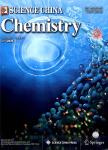A hybrid ZnO nanoparticle electron transporting layer for inverted structure organic solar cells with efficiency over 19%
作者机构:State Key Laboratory of Elemento-Organic Chemistry Center for New Organic Matter The Centre of Nanoscale Science and Technology and Key Laboratory of Functional Polymer Materials Renewable Energy Conversion and Storage Center (RECAST) Tianjin Key Laboratory of Functional Polymer Materials College of Chemistry Nankai University
出 版 物:《Science China Chemistry》 (中国科学:化学(英文版))
年 卷 期:2024年
核心收录:
学科分类:07[理学] 070205[理学-凝聚态物理] 08[工学] 080501[工学-材料物理与化学] 080502[工学-材料学] 0805[工学-材料科学与工程(可授工学、理学学位)] 0702[理学-物理学]
基 金:supported by the National Natural Science Foundation of China (NSFC) (52025033, 52373189 and 21935007) Ministry of Science and Technology of the People's Republic of China (MoST) (2019YFA0705900, 2022YFB4200400 and 2023YFE0210400)
摘 要:Electron transport layers(ETLs) play a pivotal role in determining the efficiency and stability of inverted structure organic solar cells(OSCs). Zinc oxide nanoparticles(ZnO NPs) are commonly used as ETLs due to their mild deposition conditions and compatibility with flexible plastic substrates, facilitating scalable manufacturing. In this study, we introduce a molecule called NMO, which serves a dual purpose: efficiently dispersing ZnO nanoparticles and acting as a surface modification layer for ZnO NPs thin films. The hybrid ETL created by blending and surface modification with NMO significantly enhances both the efficiency and stability of OSCs. Inverted structure OSCs, based on the PM6:Y6 system and utilizing the hybrid ETL, achieve impressive power conversion efficiency(PCE) of 18.31%. Moreover, these devices demonstrate exceptional stability during shelf storage(T80= 19,650 h), thermal aging(T80= 7783 h), and maximum power point tracking(T80= 3009 h). Importantly, the hybrid ETL exhibits good generality, as all tested OSCs utilizing it display significantly improved efficiencies and ***, a PCE of 19.23% is attained for the PM6:BTP-eC9-based device, marking the highest reported efficiency for inverted single-junction OSCs to date.



